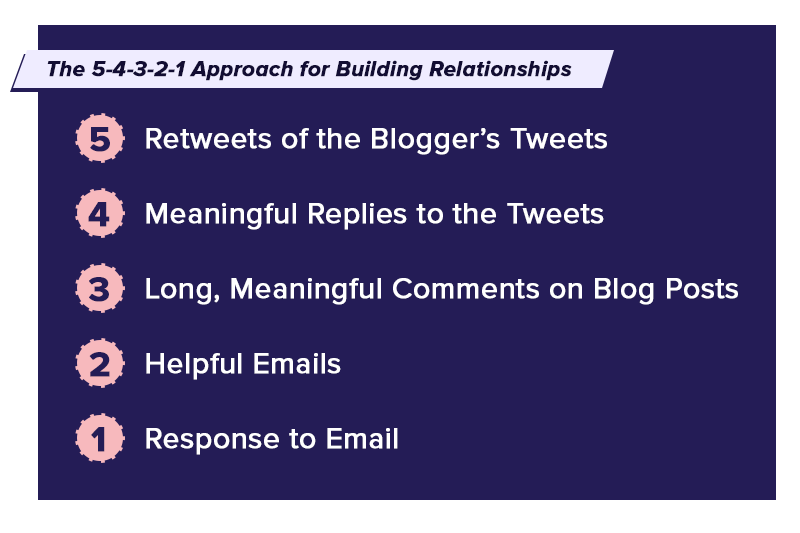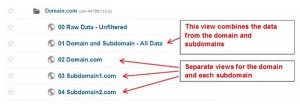Should your agency blog to win new business? If yes, how should you go about it? Find out in this guide to blogging for agencies.
You create extraordinary, exciting content for your clients. Your content marketing plans can fill entire folders. And your results give your clients record-breaking quarters.
But are you putting in the same effort for your own content?
For most agencies, the answer would be ‘no’. As good as agencies are at marketing their clients, they often put their own marketing efforts on the backburner. Word-of-mouth and networking become their only sources of new business, leading to that familiar feast-and-famine cycle.
Things don’t have to be this way. Something as simple as blogging can have a dramatic impact on your lead generation efforts. A well-maintained blog is a perfect advertisement for your agency – and a perpetual source of leads.
How do you go about blogging for your agency? And how do you ensure that you don’t just create content but gather traffic and leads?
Let’s find out!
Why Agencies Should Blog
Most agency websites (especially creative agencies) tend to follow a similar pattern – an extensive portfolio punctuated with brand copy, an extensive ‘about us’ page, and a contact form.
What’s usually missing from this pattern is that familiar link found on most B2B sites: ‘Blog’.
DuncanChannon’s website does a fantastic job of promoting the agency, except for the missing ‘blog’ link (Image source)
This absence can be partly attributed to tradition. Creative agencies have typically relied on extensive networking to win new business. Capturing leads through B2B marketing tactics is something they’ve never truly prioritized, even when they know its effectiveness.
The other reason for this absence is a lack of skills or knowledge. B2B blogging is an entirely different beast than creating B2C brands. Lacking a detailed plan, agencies choose to simply ignore blogging altogether.
The result is significantly lower website traffic and higher lead costs. As HubSpot points out, companies that blog have 55% more website visitors. The content they create also has a compounding effect, attracting more and more traffic over time.
The good news is that blogging for agencies is neither complicated nor resource intensive. As I’ll show you below, any agency can start blogging with minimal investment.
All you need is a good plan.
How to Create a Blogging Plan for Your Agency
As an agency, you’re not overly dependent on organic traffic for new business. This gives you considerable freedom in how you approach blogging. You can either go all out, turning your blog into a B2B lead machine. Or you can turn it into a branding engine, churning out thought leadership content.
Regardless of your approach, you need a comprehensive plan.
I’ll show you how to create one below.
The 3 Components of a Blogging Plan
Every comprehensive blogging plan has three components:
- Ideation, which deals with identifying target audiences and brainstorming ideas for them
- Creation, which deals with creating content based on the above ideas
- Distribution, which deals with distributing created content to attract links, traffic and shares
Let’s look at each of these components in more detail.
Ideation: What to Blog About?
Content ideation might be the toughest part of blogging. Or the easiest.
It all depends on two things:
- How well you know your target audience, and
- What you want to achieve with your blog
As an agency, I trust that you have a good understanding of your audience. If not, read this guide to creating buyer personas.
In short, you need to identify your ideal client and map their:
- Company size
- Decision-making hierarchy
- Initial discovery process
- Whether they work primarily with local, regional, or international firms
- Whether they’re looking for a principal agency or a “tactical” agency for project-based work
I can’t stress the last point enough. Principal agencies are all about fit, culture, and relationships. Tactical agencies doing project-based work, on the other hand, are chosen mostly for their skill and domain expertise.
This has a huge impact on your content ideation strategy. A principal agency can focus mostly on branded content. A tactical agency, meanwhile, has to lure in visitors by demonstrating its skills.
Based on your target audience, you can create several types of content for your blog:
Thought leadership: Thought leadership content is all about showcasing your expertise. It rarely, if ever, focuses on keywords or even specific distribution channels. Rather, its sole purpose is to show readers that you are the best in your field.
Most thought leadership content would be from your senior execs.
WPP IQ is a great example of a thought leadership blog featuring content from some of WPP’s top agency leaders.
If there is only one type of content you can create, make it thought leadership content.
Search-focused: These are blog posts that focus on specific keywords in the hope of attracting passive traffic through organic search. Search-focused content is straight from the B2B content marketing playbook. Think of articles on topics like “how to hire a digital marketing agency” or how to create a content strategy”.
This is an example of search-focused agency content (Source)
Your objective with such content is to answer search users’ queries and positively brand your agency.
Social-focused: Any content that focuses largely on driving traffic through social media falls in this category. Lists, roundups, ‘top X’ lists, visual stories, etc. are good examples of social-focused content.
While social content is largely traffic-oriented, it also acts as a strong branding vehicle, particularly when you’re targeting early Awareness stage clients. A well-liked social post can introduce your agency to potential clients, paving the way for future conversations.
Roundups and lists like these are great examples of social-focused content (Source)
Brand-focused: Weekly roundups, infographics, YouTube videos and podcasts, portfolio posts, case studies – anything that doesn’t fit into the above categories can be classified as “brand-focused” content. The purpose of such content, as you can imagine, is to build a brand.
Brand-focused content isn’t particularly necessary in a blogging plan – thought leadership and social content do a good enough job – but they can help if you’re trying to establish yourself.
Press releases and client-focused content should not be a part of your blogging plan. The former is best covered under PR while the latter should be organized in your helpdesk, not your blog.
Once you’ve brainstormed content ideas, you can move to the next step in the blogging process – content creation.
Creation: How to Create Content
As an agency, content creation is likely your forte, so there isn’t much I can show you here.
What I can show you is how to maximize the returns from your content.
Blogging for agencies isn’t like blogging for a consumer brand; the audience demands are different.
Follow these tips to make the content creation process smoother:
Optimize for on-page SEO: Make sure that your content checks all the on-page SEO boxes, including:
- Keywords in title, main headings, and peppered throughout the blog post
- Adequate word count (at least the same as the average word count of all top 10 results for the keyword)
- Optimized for engagement, i.e. has plenty of images, videos, and other “visual breaks”
- Short URLs and, if possible, keywords in URL
- Incorporate keywords from Google Autosuggest, “People Also Search For” queries, etc.
Even if you’re not targeting search traffic, it makes sense to invest in on-page SEO. A well-optimized page has a much better chance of ranking for long-tail traffic.
Add ‘share triggers’: How do you get an influencer’s attention on social media?
By mentioning them or their business in the content of course!
Adding such ‘share triggers’ to your content can give your blog posts the social boost they need. Adding a quote from the influencer, including them in a roundup, or tagging their handle on social media are some great ways to get noticed.
Optimize for reading: Large blocks of text might be great in an academic thesis, but on a blog post, they just turn off readers. The longer your content is, the more you need to optimize it for reading.
Try tactics such as:
- Using bullet points
- Using lists
- Adding images to break up content into chunks
- Organizing blog posts into sections
- Adding section jumps or table of contents
- Adding interactivity via buttons, accordions, etc.
- Use simpler language with short sentences and paragraphs
Focus on visuals: Visuals matter, even when it comes to B2B content. An image, GIF or video can break up the monotony of a long block of text. It can also help readers visualize your argument. A strategically placed GIF can also serve as comic relief in an otherwise dull topic.

GIFs can help break up content into smaller, more digestible chunks (Image source: Giphy)
Follow a theme: A blog where every cover image follows a different style, where the tone of voice ranges from serious to sarcastic, and which has no core idea is a blog that’s destined to fail. Blogging isn’t just about traffic; it’s also a branding engine.
Thus, when you don’t follow a theme or style guide, you undermine your blog’s branding potential.
All of Sagon-Phior’s blogs use cover images that follow a similar theme (Image source)
When it comes to content creation, it’s best to play to your strengths. If you’re an SEO agency, focus on search content. If branding is your forte, focus on thought leadership content.
What comes after content creation?
Distribution – also the toughest part for most agencies.
Distribution: How to Find Readers for Your Content
‘Build it and they will come’ might have worked for Kevin Costner, but it’s a disastrous strategy for agencies. There is just far too much content out there. If you simply hit ‘publish’, you’ll rarely find readers, shares, or leads.
The solution is to create a focused content distribution strategy. Your goal should be to maximize the value you can extract from your content.
How you go about this will, once again, depend on your target audience and content focus. SEO-focused content targeting small businesses requires a very different distribution approach than a social media-focused blog post.
Regardless, your content distribution strategy should have these components:
Nurture relationships with “content amplifiers”
Every industry has blogs, media publications, journalists, and influencers who can rapidly amplify the reach of your content by sharing or publishing it on their platform. A tweet from, say, Tim Ferriss recommending your content will get you more shares than all the social media marketing hacks you can use.
Getting access to these content amplifiers is neither easy nor fast. You have to nurture relationships with them – a process that is naturally drawn out.
The positives, apart from the shares and backlinks, is that a relationship, once established, can lead to collaboration opportunities, leads, and long-term partnerships. The more valuable the influencer’s network, the more time you’ll have to invest in the relationship.
Start by identifying 5-10 content amplifiers in your industry. Then use the “5-4-3-2-1 approach” to register yourself on their radar.

The 5-4-3-2-1 framework helps you reach out to influencers in an organized manner (Image source)
Think of this as a long-term investment. If you plan to make blogging central to your marketing strategy, you’ll need a large content distribution network.
Repurpose and redistribute
A piece of content that fails on one platform can easily succeed on another once it’s reformatted and redistributed.
For example, a blog post might fail, but if turned into a YouTube video, it might find a larger audience.
Generally speaking, the more platforms you can redistribute your content on, the broader its reach. A single blog post can be repurposed and redistributed as:
- A presentation to be distributed on Slideshare
- A YouTube video
- A series of tweets and social media posts
- A downloadable PDF (which can also act as a lead magnet)
- Quora and Reddit answers/self-posts
- A free tutorial
If you find that one of your blog posts isn’t doing the best it can, try repurposing it – it just might find a lease of life elsewhere.
Find niche communities
Some of the best avenues for sharing your content are niche communities. Some of these communities have dedicated members who enjoy and happily share high-quality content.
The tough parts of this approach are a) finding communities, and b) establishing yourself as a member. The latter is particularly important lest you flag off their spam alarms.
To find communities, try using search operators such as:
- [Your niche] + “intitle: forum”
- [Your niche] + “community”
- [Your niche] + “board”
Sites like Facebook and Reddit are great places to find communities and groups. Use tools like RedditSearch.io to search for targeted Subreddits.
Use Facebook search to find niche-focused groups
Once you find a community, join it and become a valued member by sharing relevant content (not your own) and helping others. Only once you’ve established yourself as a legitimate member should you start sharing your own content.
This is another long-term strategy that can yield not just shares and traffic, but also meaningful connections and relationships.
Next Steps
This blogging plan is not comprehensive by any means, but it should give you a bird’s eye view of the blogging process for agencies.
What matters more is that you see blogging as a long-term investment in your agency’s brand and web presence. Don’t use it to chase short-term marketing goals. Rather, use it to establish relationships and gather traffic and leads over time.
Of course, once you start capturing and converting leads, you’ll need a way to serve your clients. An agency-focused project management software like Workamajig can make the entire process substantially easier.
But you don’t have to take our word for it – just take Workamajig for a test drive and see for yourself.
Digital & Social Articles on Business 2 Community
(42)




